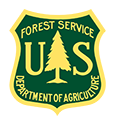Request for Information: Agriculture Innovation Agenda
Excerpts cross-posted from the USDA Federal Register Notice and press release.
'The United States Department of Agriculture’s (USDA) is seeking public and private sector input on the new Agriculture Innovation Agenda.
USDA is currently accepting public comments and written stakeholder input through its Request for Information (RFI) (PDF, 257 KB) through August 1, 2020 following its publication in the Federal Register.
The Agriculture Innovation Agenda is comprised of four main components. The first component is to develop a U.S. agriculture innovation strategy that aligns and synchronizes public and private sector research. The second component is to align the work of our customer-facing agencies and integrate innovative technologies and practices into USDA programs. The third component is to conduct a review of USDA productivity and conservation data. USDA already closely tracks data on yield, but on the environmental side, there’s some catching up to do. Finally, USDA has set benchmarks to hold us accountable. These targets will help measure progress toward meeting the food, fiber, fuel, feed, and climate demands of the future. Some of the benchmarks include:
- Agricultural Productivity: Increase agricultural production by 40 percent by 2050 to do our part to meet estimated future demand.
- Forest Management: Build landscape resiliency by investing in active forest management and forest restoration through increased Shared Stewardship Agreements with States.
- Food loss and waste: Advance our work toward the United States’ goal to reduce food loss and waste by 50 percent in the United States by the year 2030.
- Carbon Sequestration and Greenhouse Gas: Enhance carbon sequestration through soil health and forestry, leverage the agricultural sector’s renewable energy benefits for the economy, and capitalize on innovative technologies and practices to achieve net reduction of the agricultural sector’s current carbon footprint by 2050 without regulatory overreach.
- Water Quality: Reduce nutrient loss by 30 percent nationally by 2050.
- Renewable Energy: We can increase the production of renewable energy feedstocks and set a goal to increase biofuel production efficiency and competitiveness to achieve market-driven blend rates of 15% of transportation fuels in 2030 and 30% of transportation fuels by 2050.
Read more about the Agriculture Innovation Agenda (PDF, 196 KB).'




